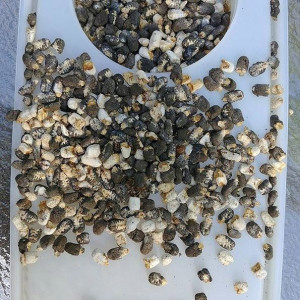Chalkbrood
What is Chalkbrood?

Chalkbrood is a disease caused by a fungus (Ascosphaera apis) that affects in honeybee brood. It is usually seen in spring when the weather is still cold. There can be several reasons for bees to become infected but I feel that stress on a hive is one of the main reasons we’ve seen. Chalkbrood will usually not kill a hive, but it will severely reduce hive population causing a major reduction in honey production. If it’s seen, the beekeeper needs to take appropriate action.
What to look for:
- Whiteish coloured brood that looks like chalk inside the brood patch.
- You may first see these white ‘mummies’ lying around the entrance of a hive as bees have carried out the infected brood.
Where does it come from:
- It’s often seen in spring in overwintered hives. Caused by stresses on the hive.
- Cool temperatures
- Weak Colonies
- Poor ventilation
How can it be prevented:
- Using stock that is resistant.
- Increase ventilation of the hive.
- Keep switching out old frames for new drawn out frames.
- Making sure your hives have proper nutrition.
- Spoil your bees using essential oils stimulants (We’re serious)
If you find a hive where chalkbrood is an issue, we will usually requeen and give more brood to the hive if it’s a serious problem. However, if you hive is too weak you may be best to cut your losses and move on.
We’ve had years where it has been a problem for several hives and we’ve had years where it’s been no issue at all. Some years are so good, you’ll even forget about it until someone asks about it.